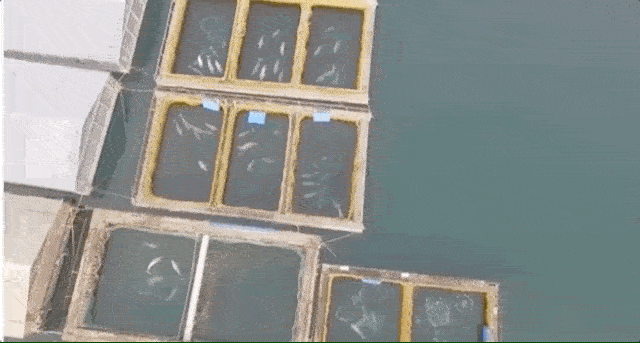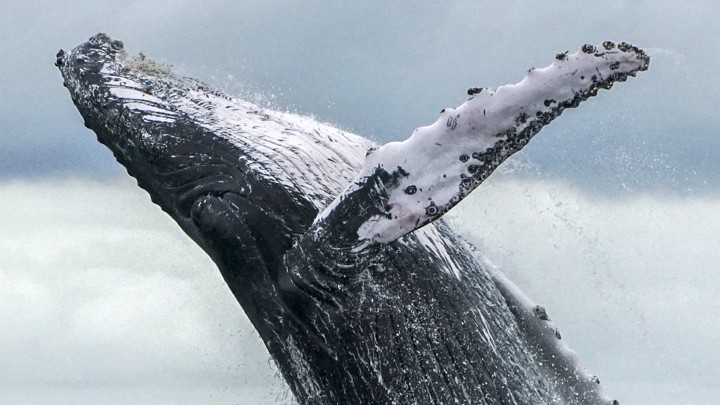“Thar She Blows!”
Whalers in the past would shout out “Thar She Blows!” when the spouts of whales were seen, creating excitement and action for the sailers to go out to catch the whale. Presently, “Thar She Blows!” can indicate to a group of boaters that the spouts of whales have been seen, creating excitement as everyone wants to get a good look at these highly intelligent and magestic animals that are found up and down the coast of British Columbia. On any boating excursion, one would be very fortunate to see two or more different species of Cetaceans at different times of the trip. Even more special would be seeing two species at the same time during a trip! The cover photo shows a rare occurence where Transient Bigg’s Orca were travelling very close to a few Humpback whales with both surfacing and spouting about the same time. The Orca were not interested in the Humpback whales but they were hunting a sea lion for its meal.
Sightings of Humpback whales have remained high with many appearing around Mitlenatch Island, Powell River, and Texada Island. One Minke whale was observed near White Islets, south of the Sechelt area. A number of Transient Bigg’s Orca families have been observed in various inland waterways. Dall’s porpoises and Pacific White-Sided dolphins of various group sizes have been seen from the lower Georgia Strait up to Loughborough Channel; one pod of dolphins was estimated at a few hundred. Completing our report is three sightings of Harbour porpoises and two sightings of sea otters.
Thank you to those who attended the public presentations and the workshops at the ‘World of Whales’ Event held in Powell River last weekend. We hope that you have enjoyed the presentations, and that your level of knowledge and enthusiasm for whales have increased during your time at the event. Thank you to the presenters, volunteers, and to all those who provided support to make the Event possible, memorable, and (WOW!) amazing!
Keep your eyes open, report your sightings to us, and use caution on the water giving these animals plenty of room. Remember N.E.W.S. when you see a whale, meaning put your boat in NEUTRAL, ENJOY the view, WAIT till the whales are at a fair distance, and then SLOWLY leave the scene.
This meeting is open to students, researchers, educators, businesses and others involved with marine mammals. Anyone in one or more of these categories is welcome to attend.
- Saturday, November 24, 2018 Marine Mammal Research Unit 9:30am – 5:00pm
- Saturday, December 8, 2018 Time: 1 pm to 2:30 pm
Review our current Volunteer Job Postings
Archive Explorer navigates 10,000+ Cetacean Sightings, images, videos and audio recordings.
*Recommended for desktop browsers and newer mobile devices
Archive Explorer dives into the Coastal Cetacean world. View Cetacean sighting locations, photos and videos:
- All species including Orca, Humpback, Grey Whale or Dalls Porpoise
- Follow the endangered Southern Residents Orca in the Salish Sea
- Search for encounters with T002C2 Tumbo
- Witness a close-up Orca encounter video in Port Alberni harbour
- Follow the T010s Transients as they hunt and travel the inside passage
- Track “KC”, the ever popular Humphack’s movements this past August
- Locate any of 12,000 named locations on the BC and WA State coast
- Print custom sighting reports and maps (Coming Soon)
Archive Explorer Help Page explains many advanced functions
Send your Comments and Questions to: Archive Explorer Feedback
Sightings Open Data includes all sightings data, photos and videos, in a table you can filter and download.
Days before the start of the summer fishing season, when guides and outfitters on Canada’s west coast gamble their financial prospects for the year, fishing lodge owner Ryan Chamberland received devastating news.
The coastal waters of Vancouver Island, which he and four generations of his family had fished for salmon, would be out of bounds. The unexpected closure was part of a desperate effort by the Canadian government to save an endangered population of killer whales….
read on
Task-force members said at a news conference at the Seattle Aquarium that bold action is needed to save the critically endangered population of killer whales from extinction. Only 74 southern resident orcas remain.
The recommendations will depend on significant new funding from the state Legislature as well as new legislation to take effect, so the wish list is a long way from becoming reality for the whales.
Among the biggest changes called for is a 3- to 5-year moratorium on whale watching by any boat of the southern residents, to provide quieter waters for them.
Some of the most controversial issues considered by the task force were put off, including breaching of the Lower Snake River dams….
read on
Yet just to the north, the orca population has more than doubled to 309 whales since scientists started counting them in 1974, and has been growing ever since, at 2.2 percent per year on average.
For scientists seeking to better understand the southern residents’ troubles, the northern residents are like a control group, said Sheila Thornton, chief killer-whale biologist for the Department of Fisheries and Oceans Canada.
"Their environment has changed so quickly, over just two generations," Thornton said of the southern residents. "To keep up with these changes is almost an impossible task. How do they survive in the environment we have created for them?"…
read on
“Humanity and the Deep Ocean” from October 2014, one in an ongoing series of long-term thinking lectures: Conversations at The Interval in San Francisco….
read on
"Everyone believes [orcas] are confined to high latitudes but that’s not true," says Guzman. "We don’t have much information for the South Pacific population. What we have is more and more reports around the region in tropical and temperate areas that there are more sightings, but that might not be enough [to say the orca population is growing.]"
What the researchers do know is that humpbacks in the region have steadily recovered from centuries of intense whaling. In the 20th century alone, the whaling industry wiped out an estimated 2.9 million large whales. After a moratorium on whaling was put in place in 1985, humpbacks recovered so spectacularly that some call the gentle giants conservation’s "poster child." Today, nine of 14 populations worldwide no longer require protection under the Endanger Species Act, but remain protected under other federal regulations like the Marine Mammal Protection Act….
read on
Eg2301 died in 2005, but it took years for scientists to validate and share the hormone-measuring method that has now enabled this tale to be told. Working in her Boston lab, Lysiak drilled samples from the dried baleen, which, she says, had been "transformed by a lot of Herbal Essences shampoo from a smelly thing into a long, shiny, beautiful triangle of data." She and her colleagues analyzed how the concentrations of steroid and thyroid hormones and stable isotopes changed throughout the last eight years of the whale’s life.
Alex Werth, a biologist at Hampden-Sydney College in Virginia who was not involved in the study, says the advent of baleen analysis is "a clever and welcome means of learning about a poorly understood animal, including our impact on its survival."
In Eg2301’s baleen, that impact shows up as soaring stress hormones-specifically corticosterone-during her dooming entanglement. Mouth agape to…
read on
In a letter delivered last Monday to the Far East office of the Russian Federal Service for Overseeing Natural Resources, 25 scientists noted that such captures are highly stressful to free-ranging orcas, leading to injuries, deaths, fractured social networks within pods and potential long-term population declines.
According to recent media reports, Russian prosecutors are now investigating why 90 belugas and 11 orcas have been confined since the summer to tiny enclosures, dubbed "whale jails” by local activists, off Russia’s Pacific coast in the city of Nakhodka near Vladivostok. It is believed that many of the belugas and all of the orcas will be sold to Chinese aquariums. Some of the belugas may go to Russian aquariums….
read on
Whale earwax forms like yours does: A gland secretes oily gunk into the ear canal, which hardens and accumulates into a solid, tapering plug. In the largest whales, like blues, a plug can grow up to 10 inches long, and looks like a cross between a goat’s horn and the world’s nastiest candle. Fin whale wax is firmer than blue whale wax, bowhead whale wax is softer and almost liquid, and sei whale wax is dark and brittle. But regardless of size or texture, these plugs are all surprisingly informative….
read on








